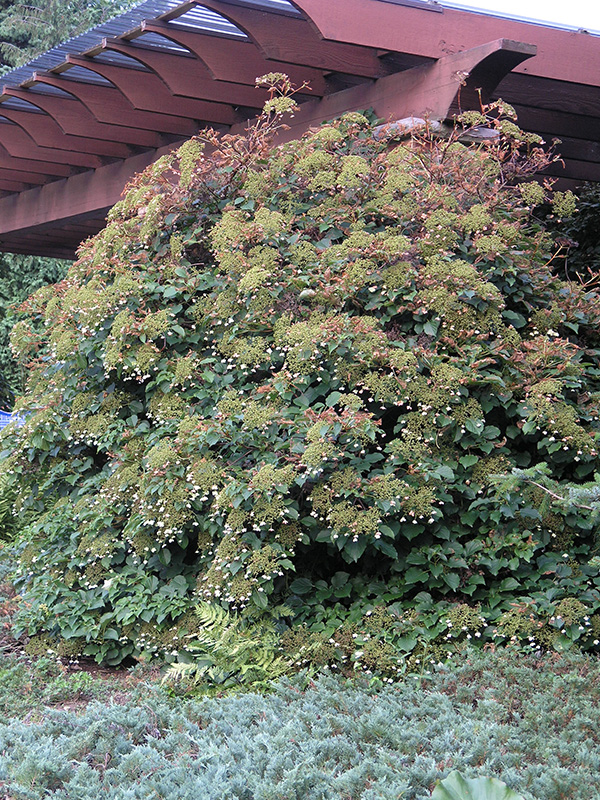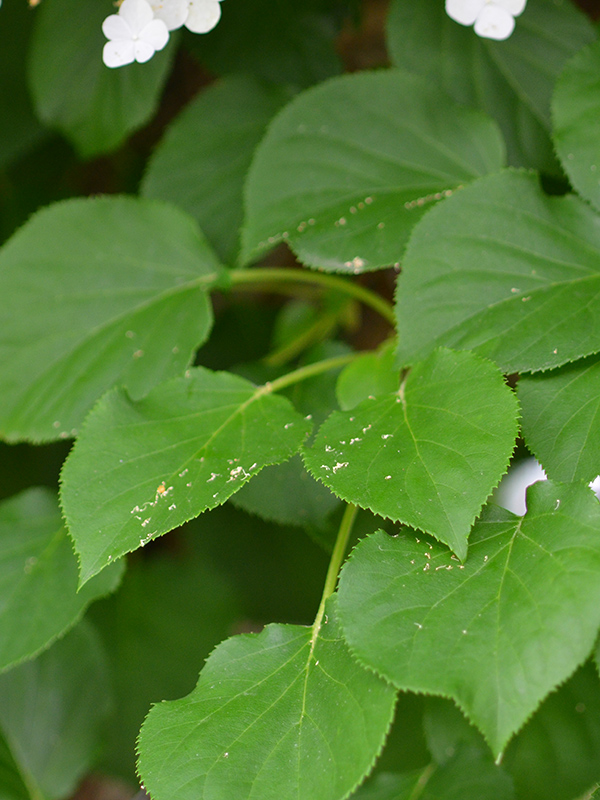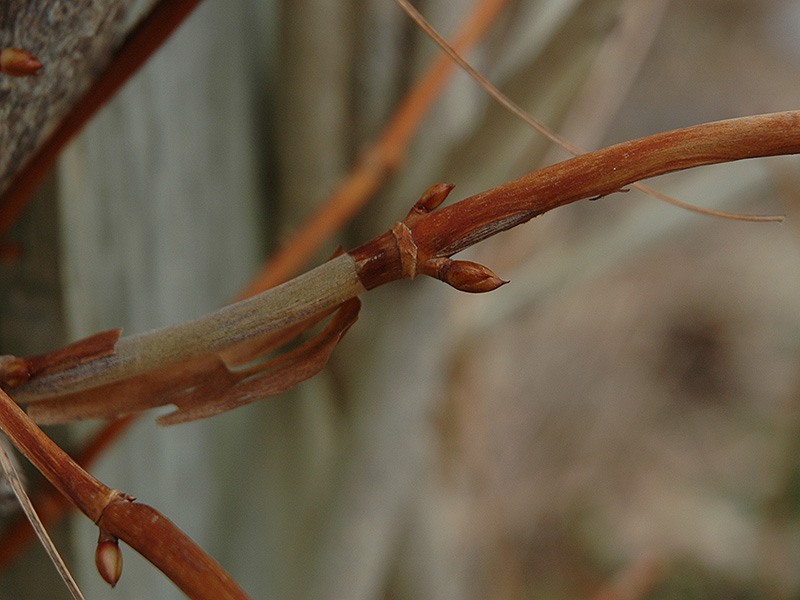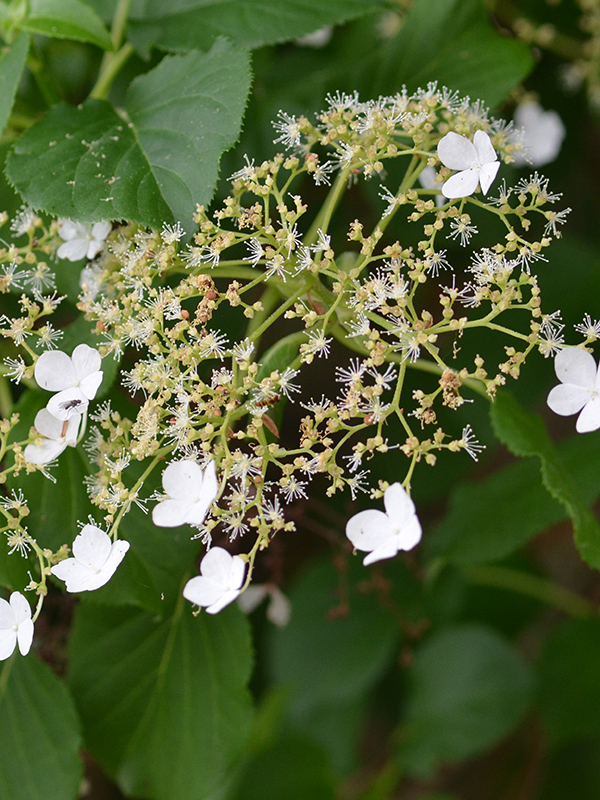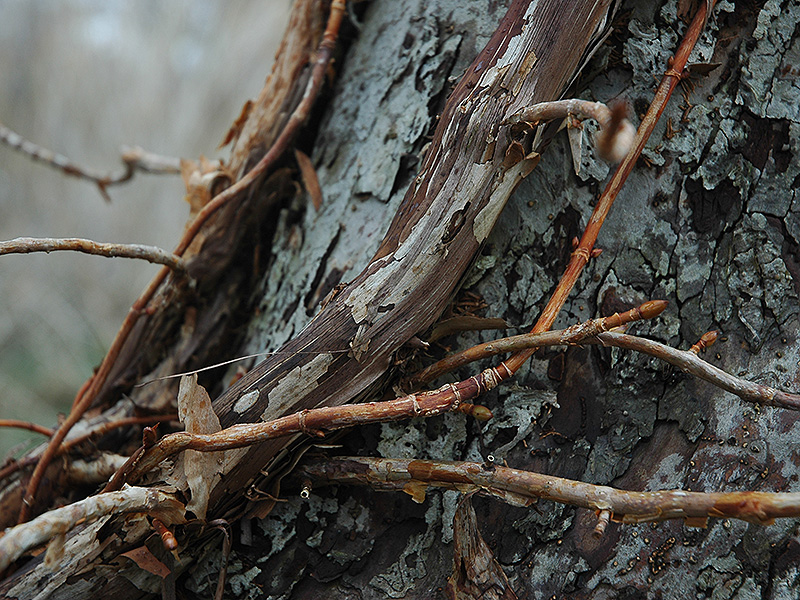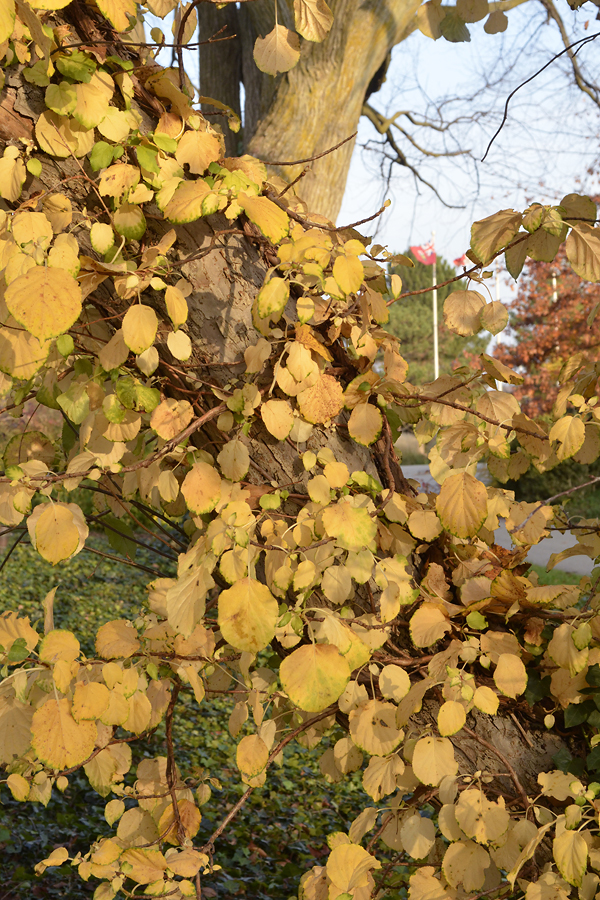| General Description | Hydrangea anomala subsp. petiolaris or Climbing Hydrangea is a woody climbing vine with white flowers. Slow to establish but once well rooted a semi-vigorous vine. |
| ID Characteristic | Exfoliating red-brown bark and shiny, dark green, heart-shaped leaves. |
| Landscape | Creates a pleasing mass climbing on brick or stone walls, arbours and trees. I have used it to great effect growing up the trunk of a mature crabapple in the A.M.(Mac) Cuddy Gardens in Strathroy, Ontario, Canada.
|
| Propagation | From softwood cuttings or seed in an unheated greenhouse or cold frame.
|
| Cultivation | Best grown in rich, slightly moist, well drained soil in part to full shade. Will grow in full sun but needs constantly moist soil.
|
| Pests | Nothing notable, relatively disease free.
|
| Notable Specimens | The A.M. (Mac) Cuddy Gardens, Strathroy, Ontario, Canada. |
| Habitat | Dense to sparse forests in valleys and along streams. |
| Bark/Stem Description | Brown, peeling in the autumn.
|
| Flower/Leaf Bud Description | Imbricate and green-brown, scales are often shiny.
|
| Leaf Description | Opposite, simple, heart-shaped, serrate, lustrous and dark green, 5 - 10 cm long.
|
| Flower Description | White, sweetly scented, lacecap 16 - 25 cm in diameter with small fertile flowers in the centre surrounded by a ring of more showy, sterile florets.
|
| Fruit Description | Capsule, dehiscent and small. |
| Colour Description | Dark green foliage, turning yellow in late autumn.
|
| Texture Description | Medium to fine with foliage and medium without foliage.
|
